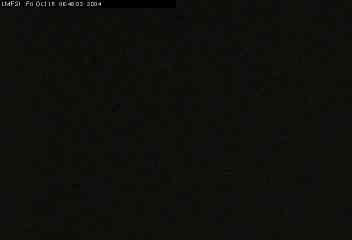 |
||||
NOAA / GLERL Lake Michigan Field Station
Muskegon, Michigan
 |
 |
 |
Current WebCam views |
Current weather conditions |
Muskegon Area map |
Vessel Operations and Research Center
In 1990 the National Oceanic and Atmospheric Administration's Great Lakes Environmental Research Laboratory (GLERL), part of the U.S. Department of Commerce, assumed ownership of the former Coast Guard base at Muskegon, Michigan on the south side of the channel between Muskegon Lake and Lake Michigan. The site includes three buildings and research vessel dockage next to the main building. During 1993, one of the three buildings was renovated to include scientific laboratories, offices and storage, and in 1994 a lead scientist and his support staff were permanently relocated to the site, which was officially named the Lake Michigan Field Station.
The other buildings provide space for small vessel storage and repair, additional space for scientific activities, a meeting room, the Vessel Operations Office, and equipment storage. The function of the Field Station is to provide a base of operations for GLERL's primary research vessel, which is presently the R/V Shenehon, and to provide a focal point for GLERL's research on Lake Michigan.
Lake Michigan Long-Term Trends Research
One of the research programs that was transferred from Ann Arbor to Muskegon began over 10 years ago and focuses on understanding and assessing long-term changes in, and monitoring the long-term health of, the Lake Michigan ecosystem, especially the lower food web. The Lake Michigan ecosystem is threatened with dramatic changes due to the introduction of various nonindigenous organisms, such as the zebra mussel, the quagga mussel, and the spiny water flea (Bythotrephes, or "BC" for short). Two new nonindigenous fish that have entered the Great Lakes are the ruffe and the round-nose goby. The ruffe has not been found in Lake Michigan yet, but was recently found in Thunder Bay, Alpena, Michigan, on Lake Huron. The round-nose goby has already been found in Lake Michigan at the north end of Green Bay and at several sites near Chicago.
GLERL's Lake Michigan Long-Term Trends Program is the most comprehensive long-term study of Lake Michigan in existence. Besides the traditional monitoring of water quality and phytoplankton and zooplankton communities, the Lake Michigan program includes monitoring for ultraviolet light penetration, phytoplankton productivity, larval fish and opossum shrimp (Mysis relicta) abundances, and the abundance of protozoans (microscopic organisms that include such taxa as Cryptosporidium, which contaminated the Milwaukee drinking water supply a few years ago, causing over 150 deaths and over 400,000 ill people). This program is now being modernized with the construction of automated state-of-the-art moored and drifting instrument packages that will measure important ecosystem parameters much more often than we were previously capable of doing. Once this new, highly detailed, information becomes available and can be combined with satellite imagery and computer modeling, we expect to be able to start mapping important ecosystem indicators across the entire lake.
Lake Michigan Ecosystem Research
In addition to the long-term monitoring program described above, researchers at the Lake Michigan Field Station are conducting field studies of the effects of episodic events, such as storms, on the Lake Michigan ecosystem. GLERL's High Frequency Events Project uses advanced technology instruments moored in the lake, where they record conditions before, during, and after the passage of storms. Presently one instrument package is moored on the lake bottom, and another is being constructed. Researchers at the Lake Michigan Field Station are participating in a joint NOAA/NSF funded program to study the comparative food web structure and productivity of all five Great Lakes. Due to recent ecological changes that have taken place in the lower lakes, scientists are extremely interested in comparing the present status of all the lakes to their past conditions. This information is critical for future management decisions concerning the lake's fisheries and nutrient abatement programs. GLERL's Lake Michigan Field Station scientists are also planning a research program to study the influence of river outflows, such as the Grand and Muskegon Rivers, on the ecology of Lake Michigan, especially in the adjacent nearshore areas. These rivers have two of the largest drainage basins in Michigan and are important sources of nutrients and other materials to Lake Michigan.
CoastWatch
CoastWatch is a nationwide NOAA environmental data service, and GLERL's Ann Arbor facility is the location of the Great Lakes CoastWatch site, one of eight national CoastWatch nodes which receives and produces environmental data. The Great Lakes Surface Environmental Analysis (GLSEA) is a daily surface water temperature map, Great Lakes meteorological observations are obtained hourly from lake environmental buoys and other sources, and water level gauge measurements are acquired daily from the National Ocean Service. The Michigan State University Center for Remote Sensing accesses the GLERL CoastWatch node to obtain satellite images of Lake Michigan surface temperature, which they then convert to contour maps usable by the general public. These maps are distributed to thousands of private sector users in western Michigan and Indiana with the assistance of the Michigan Sea Grant Extension located in Grand Haven, and are also available at the Lake Michigan Field Station.
For more information about the Lake Michigan Field Station
and the research activities centered there, please contact:
Dr. Gary L. Fahnenstiel
NOAA/GLERL - Lake Michigan Field Station
1431 Beach St.
Muskegon, MI 49441-1098
gary.fahnenstiel@noaa.gov
231-759-7824
231-759-7906 (FAX)
For more information about Muskegon, go to the Muskegon Area Chamber of Commerce web site.
Last updated: 2004-01-13 jjs

